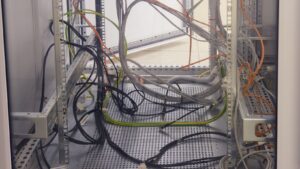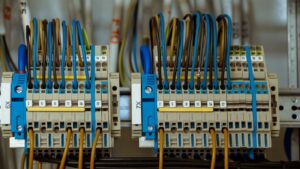Hub to Hub Connection
 In today’s fast-paced world, efficient logistics and transportation are crucial for businesses aiming to stay competitive. One key innovation driving this efficiency is the hub-to-hub connection model. By linking major distribution centers directly, companies can streamline their supply chains, reduce transit times, and lower operational costs.
In today’s fast-paced world, efficient logistics and transportation are crucial for businesses aiming to stay competitive. One key innovation driving this efficiency is the hub-to-hub connection model. By linking major distribution centers directly, companies can streamline their supply chains, reduce transit times, and lower operational costs.
Hub-to-hub connections aren’t just about moving goods faster; they also enhance reliability and flexibility. With fewer touchpoints and less handling, there’s a significant reduction in the risk of damage or loss. This model also allows for better scalability, making it easier for businesses to adapt to fluctuating demand and market conditions.
What Is Hub To Hub Connection?
A hub-to-hub connection refers to a transportation model linking major distribution centers directly. This approach streamlines logistics by reducing the number of intermediate stops between hubs. Efficient routing minimizes handling, which lowers the chances of damage and reduces transit times. Large logistics companies, like FedEx and UPS, leverage this model to enhance delivery efficiency.
In contrast to traditional point-to-point systems, hub-to-hub connections facilitate bulk movement. Consolidating shipments enables businesses to reduce operational costs. For example, instead of sending multiple smaller shipments, companies can optimize their supply chain by grouping them into one larger dispatch.
Another advantage involves flexibility and scalability. Hub-to-hub connections adapt to varying market demands with ease. Expanding or contracting distribution networks without significant infrastructure changes becomes feasible. This scalability helps businesses respond swiftly to market fluctuations, maintaining competitiveness and meeting customer expectations effectively.
Tables or data structures to represent various facets can illustrate specific points. However, the key takeaway remains that hub-to-hub connections optimize logistics and transportation for enterprises needing efficient, cost-effective supply chain management.
Benefits Of Hub To Hub Connection
Hub-to-hub connections offer multiple advantages essential for enterprises aiming to optimize their supply chains and achieve seamless logistics. Below are detailed benefits categorized under key subheadings.
Enhanced Efficiency
Hub-to-hub connections enhance efficiency by streamlining operations. Direct routes between major hubs minimize intermediate stops, reducing transit times. Efficiency improvements allow businesses to meet tight delivery schedules and maintain high service levels. Consolidation of shipments and bulk movements further contribute to operational efficiency, ensuring goods move swiftly through the supply chain.
Cost Savings
Cost savings arise from the reduced need for multiple handling points in hub-to-hub logistics. Fewer touchpoints decrease labor and handling costs. The direct routes minimize fuel expenditure and wear on transportation vehicles. High-volume shipments leverage economies of scale, reducing per-unit transportation costs. These savings collectively enhance the bottom line for businesses.
Improved Reliability
Reliability improves with the hub-to-hub model by reducing handling and intermediate storage, thus lowering risks of damage and loss. Direct connections between hubs lead to more predictable transit times, enhancing delivery consistency. The reduced complexity of logistics networks translates to fewer operational disruptions, ensuring that businesses maintain their commitment to customer satisfaction and service dependability.
How Hub To Hub Connection Works
Hub-to-hub connections streamline logistics by linking major distribution centers directly, minimizing intermediate stops. This model boosts efficiency, cuts costs, and enhances reliability in supply chains.
Technical Specifications
Technical specifications outline the capabilities of the hub-to-hub model. These connections handle high-capacity loads with specialized vehicles like freight trucks, trains, and cargo planes. Distribution centers must possess advanced loading and unloading equipment, such as automated conveyors, for quick transfer. Central hubs equip with sophisticated software for real-time tracking, inventory management, and route optimization, ensuring timely deliveries and minimal disruptions.
Key Components
 Key components drive the efficiency of hub-to-hub connections. Central hubs act as primary nodes, consolidating shipments. Specialized vehicles transport goods between hubs, each optimized for different cargo types. Advanced software systems manage logistics operations, tracking freight and optimizing routes. Network infrastructure supports seamless communication between hubs, ensuring consistent updates. These elements collectively enhance the overall performance of the hub-to-hub model, making it a vital part of modern supply chains.
Key components drive the efficiency of hub-to-hub connections. Central hubs act as primary nodes, consolidating shipments. Specialized vehicles transport goods between hubs, each optimized for different cargo types. Advanced software systems manage logistics operations, tracking freight and optimizing routes. Network infrastructure supports seamless communication between hubs, ensuring consistent updates. These elements collectively enhance the overall performance of the hub-to-hub model, making it a vital part of modern supply chains.
The hub-to-hub connection model stands as a transformative approach in logistics and transportation. By directly linking major distribution centers, it streamlines supply chains, reduces transit times, and lowers costs. Its scalability and efficiency make it adaptable to market fluctuations, ensuring businesses can meet customer expectations seamlessly.



